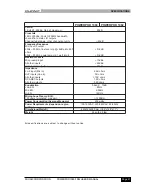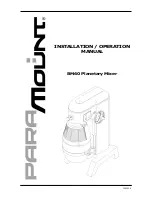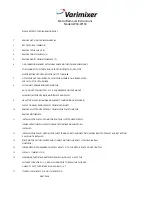
POWERPOD1080/1082 USER’ S MANUAL
PHONIC CORPORATION
aaaaa
aaaaa
aaaaa
aaaaa
aaaaa
aaaaa
aaaaaaaaa
aaaaaaaaa
aaaaaaaaa
aaaaaaaaa
aaaaaaaaa
aaaaaaaaa
aaaaaaaaa
aaaaaaaaa
aaaaaaaaa
aaaaaaaaa
CONNECTIONS
Page 6
CONNECTIONS
1 Hi-Z (High Impedance)
This input accepts high impedance 1/4"
TRS jack, balanced or unbalanced line.
When using unbalanced 1/4" TS jack,
the input automatically turns the Ring
into ground. When you send unbal-
anced signal via a 1/4" TRS connection,
make sure to connect the cold (the Ring)
to the ground (the Sleeve). Electric gui-
tar, keyboard and drum all can be con-
nected to the unit through this input.
While 1 through 6 channel inputs ac-
cepts single channel (mono) input, the
7th and 8th channel inputs accept ste-
reo inputs ideal for hooking up to exter-
nal CD player, keyboard, sampler, syn-
thesizer, tape player and etc.
!!! DO NOT HAVE DEVICES PLUG INTO
Hi-Z AND Lo-Z AT THE SAME TIME !!!
2 Lo-Z (Low Impedance)
Lo-Z input accepts balanced XLR-type
connectors, great for connecting to pro-
fessional microphones due to their low
impedance characteristics. This input of
course can also accept low impedance
signal from devices other than profes-
sional microphones.
!!! DO NOT HAVE DEVICES PLUG INTO
Hi-Z AND Lo-Z AT THE SAME TIME !!!
3 L-LINE-R
On the 7th and the 8th input channels,
there are these unbalanced 1/4" phone
jacks for stereo line input, great for ex-
ternal devices like keyboard, CD player,
tape player and etc. When sending
mono signal through via this input, need
only to plug into the “ L (mono)” jack.
This will automatic mirror the signal from
the left to the right. See figure 2 for un-
balanced connection.
4 MIC
Microphone input accepts XLR-type con-
nectors and is designed to suit a wide
range of BALANCED or UNBALANCED
signals. We recommend using profes-
sional balanced dynamic, condenser or
ribbon mics because they are the least
likely to be interfered. You of course can
use low-cost HIGH IMPEDANCE mics,
but the level of background noise is
higher since unbalanced circuit is far
more susceptible to pickup of interfer-
ence, so the shorter the cord the better.
W h e n u s i n g c o n d e n s e r m i c r o p h o n e ,
make sure the +48V phantom power is
turned on. That way power will be sent
to the 2nd and the 3nd PIN of the micro-
p h o n e . To p r e v e n t d a m a g i n g y o u r
equipments and producing unpleasant
noise, make sure all input and output
controls are turned down to “ 0” before
turning on the +48V Phantom Power.
Do not use unbalanced microphone with
Phantom Power on! This could damage
your microphone and produce unwanted
noise.
!!! WARNING: DO NOT USE UNBAL-
ANCED MICROPHONE WITH PHAN-
TOM POWER ON !!!
See Figure 2 for XLR connection







































